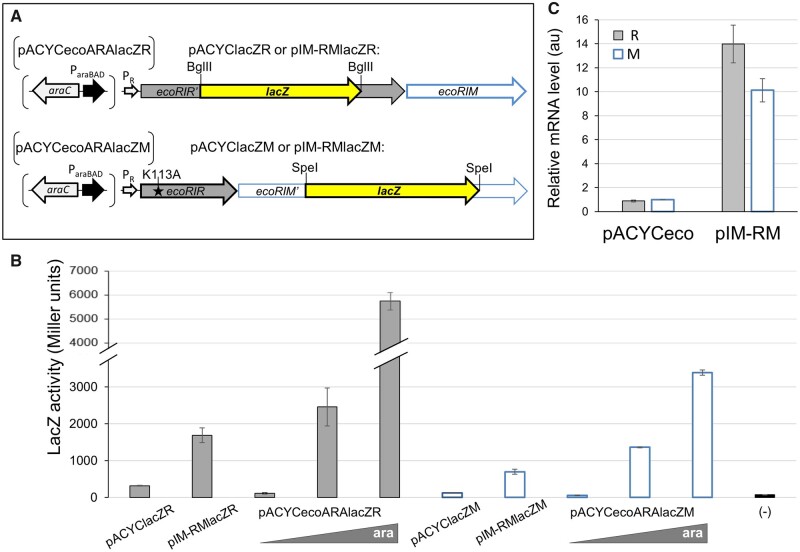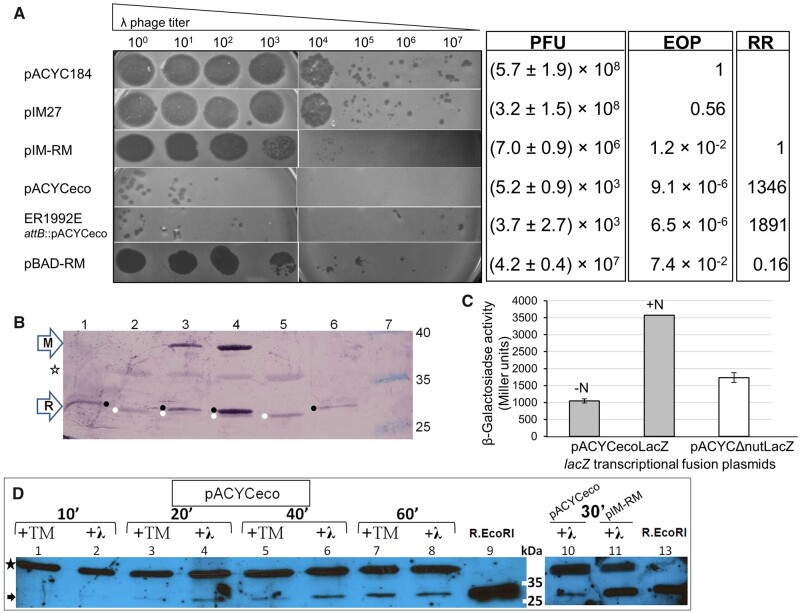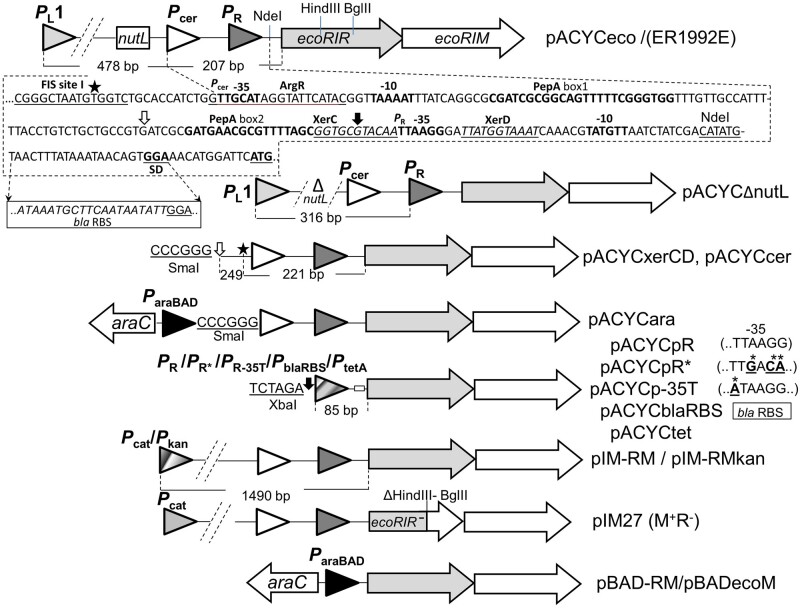II型限制性修饰系统的低水平表达赋予大肠杆菌强有力的噬菌体抗性。
DNA Research: An International Journal for Rapid Publication of Reports on Genes and Genomes
Pub Date : 2020-02-01
DOI:10.1093/dnares/dsaa003
引用次数: 6
摘要
限制修饰系统(R-M)是细菌使用的抗病毒防御工具之一,II型家族的限制修饰系统由限制内切酶(REase)和DNA甲基转移酶(MTase)组成。大多数进入的DNA分子通常在被MTase甲基化之前被酶切割,尽管观察到的DNA片段水平可能会有很大差异。使用EcoRI模型R-M系统,我们报告了DNA甲基化和切割之间的平衡可能受到来自R-M操纵子外部的转录信号的严重影响。通过调节启动子的活性,我们获得了EcoRI R-M系统的广泛限制性表型,在我们的生物学分析中差异高达4个数量级。令人惊讶的是,我们发现R-M蛋白的高表达水平与入侵噬菌体DNA的限制减少有关。我们的研究结果表明,切割和甲基化的调节平衡对R-M操纵子上下游转录信号的波动高度敏感。我们的数据为II型R-M系统维护和宿主细菌内部的潜在冲突提供了进一步的见解。本文章由计算机程序翻译,如有差异,请以英文原文为准。



Low-level expression of the Type II restriction-modification system confers potent bacteriophage resistance in Escherichia coli.
Abstract Restriction–modification systems (R–M) are one of the antiviral defense tools used by bacteria, and those of the Type II family are composed of a restriction endonuclease (REase) and a DNA methyltransferase (MTase). Most entering DNA molecules are usually cleaved by the REase before they can be methylated by MTase, although the observed level of fragmented DNA may vary significantly. Using a model EcoRI R–M system, we report that the balance between DNA methylation and cleavage may be severely affected by transcriptional signals coming from outside the R–M operon. By modulating the activity of the promoter, we obtained a broad range of restriction phenotypes for the EcoRI R–M system that differed by up to 4 orders of magnitude in our biological assays. Surprisingly, we found that high expression levels of the R–M proteins were associated with reduced restriction of invading bacteriophage DNA. Our results suggested that the regulatory balance of cleavage and methylation was highly sensitive to fluctuations in transcriptional signals both up- and downstream of the R–M operon. Our data provided further insights into Type II R–M system maintenance and the potential conflict within the host bacterium.
求助全文
通过发布文献求助,成功后即可免费获取论文全文。
去求助
来源期刊
自引率
0.00%
发文量
0

 求助内容:
求助内容: 应助结果提醒方式:
应助结果提醒方式:


